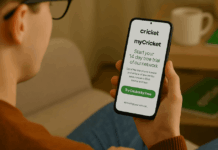Losing photos from your Android device can be distressing, but recovering deleted photos is often possible.
This guide offers a clear pathway to recover lost memories, covering everything from built-in solutions to advanced recovery tools.
Follow these steps to navigate recovery and restore your precious images efficiently.
Understanding Photo Loss
Photo loss on Android can occur unexpectedly in several ways. Understanding these scenarios can help prevent future losses:
- Accidental Deletion: Tapping 'delete' without realizing or selecting the wrong files.
- Formatting Errors: Formatting the SD card or device memory without backing up photos.
- Software Updates: Updates that cause data loss due to bugs or errors in the installation process.
- Physical Damage: Dropping or exposing the device to water leads to corrupted data.
- Virus Attacks: Malware that targets and deletes files, including photos.

Preparatory Steps
Before recovering lost photos on your Android device, take these crucial steps to maximize recovery success.
These actions prevent further data loss and increase the likelihood of retrieving your photos:
- Stop Using the Device: Cease all activities that can write new data, such as taking photos, downloading apps, or receiving files.
- Switch Off Wi-Fi and Data: Disconnect from the internet to avoid automatic updates or app installations.
- Enable Airplane Mode: This ensures that no background data exchange occurs.
- Do Not Install New Apps: Installing apps can overwrite the space where your deleted photos might still exist.
- Check Available Cloud Backups: Check for automatic backups in Google Photos or similar services before physical recovery.
Methods of Recovery
Several recovery methods are available to retrieve lost photos on your Android device. Choose the one best suited to your situation for effective results.
Built-in Features
Built-in features are inherent functionalities within devices or software, offering users essential capabilities without extra installations.
They streamline processes and enhance user experience tailored to the device's intended use.
How to Restore from Google Photos or Samsung Cloud
Restoring your precious memories from Google Photos or Samsung Cloud is easy with the built-in features provided by these platforms.
Follow these simple steps to retrieve your photos and videos effortlessly.
Steps to restore from Google Photos:
- Open the Google Photos app on your device.
- Tap the menu icon (three horizontal lines) in the top left corner.
- Select "Trash" from the menu options.
- Long-press on the items you want to restore.
- Tap the "Restore" option to recover the selected items to your Google Photos library.
Steps to restore from Samsung Cloud:
- Open the Settings app on your Samsung device.
- Scroll down and tap on "Accounts and backup."
- Tap on "Samsung Cloud."
- Select "Gallery" or "Photos" depending on your device.
- Choose the files you want to restore and tap the "Restore" button.
These steps will help you effortlessly retrieve your photos and videos from Google Photos or Samsung Cloud.
Third-Party Applications
Third-party applications are software developed by entities other than the device manufacturer, providing extra functionalities.
They can be downloaded or purchased from app stores to extend device capabilities according to user preferences.
Android Photo Recovery Apps Overview
Having reliable apps available is essential when it comes to recovering lost or deleted photos on your Android device.
Explore these alternatives to DiskDigger and Dr. Fone to easily retrieve your precious memories.
- DiskDigger: DiskDigger efficiently retrieves lost photos from Android's internal storage and SD cards.
- Dr. Fone: Dr. Fone is a versatile Android data recovery tool known for its user-friendly interface and advanced features.
- Recuva: Recuva specializes in recovering deleted photos and files from Android devices, including internal storage and SD cards.
- EaseUS MobiSaver: EaseUS MobiSaver is a comprehensive tool for Android recovery; it retrieves photos, videos, contacts, and more.
- PhotoRec: PhotoRec is a renowned open-source software that recovers photos and files across multiple platforms.
- Dumpster: Dumpster is a user-friendly app for Android that recovers deleted photos and videos with ease.
- Tenorshare UltData: Tenorshare UltData is a comprehensive tool that retrieves photos, messages, contacts, and more from various Android devices.
Detailed Steps for Using a Selected Third-party App to Recover Photos
Here's a step-by-step guide using a selected third-party app for photo recovery, ensuring a smooth and efficient process:
- Download and install the chosen third-party photo recovery app from the app store.
- Launch the app and grant permission to access your device's storage.
- Select the type of files you want to recover, such as photos, videos, or documents.
- You can choose the location where the app should scan for deleted or lost files, such as internal storage or an SD card.
- Initiate the scanning process and wait for the app to analyze the selected storage location for recoverable files.
- Once the scanning is complete, review the list of recovered files and select the photos you want to restore.
- Follow the prompts to complete the recovery process, ensuring the restored photos are saved securely.
- After recovery, verify that all desired photos have been restored and backed up to prevent future loss.

Professional Services
Professional recovery services can be invaluable when facing data loss beyond what standard software can handle.
Here's when to consider them and what to expect from their expertise:
- Severe physical damage to the storage device
- Corrupted or overwritten data
- Deleted files with no backup available
- Failed DIY recovery attempts
- Need for forensic-level recovery for legal or investigative purposes
Preventing Future Loss: Tips for Regular Backups and Using Cloud Services Effectively
Protecting data from future loss is vital. Here are tips for adequate backups and cloud service use:
- Schedule automated backups regularly to external drives or cloud storage.
- Use cloud storage to sync files across devices and access them anywhere.
- Enable versioning in cloud storage for file history and recovery.
- Implement robust security measures for cloud accounts.
- Regularly update backup strategies to meet changing needs.
- Ensure physical backups are stored in secure locations.
- Test your backups periodically to ensure they are functional.
- Consider using encryption for sensitive data stored in the cloud.
To Conclude
In conclusion, Android photo recovery is a manageable process that uses the right tools and knowledge.
Following the steps outlined in this comprehensive guide can effectively retrieve your precious memories and important files.
Remember to back up your data regularly to prevent future loss. Start your photo recovery journey today and safeguard your memories for years.
Also Read: Jobs at Migros: Learn how to apply









